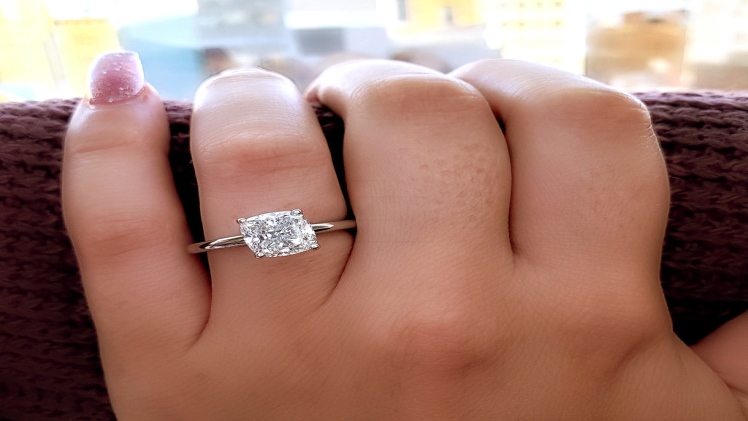When it comes to purchasing jewelry, one of the biggest questions that people have is whether or not to buy a real diamond or a lab grown diamond. There are many different factors to consider, such as the price, size, color, clarity and resale value. So which is the better choice?
Size
When it comes to purchasing an engagement ring, the price is not the only factor. The type of metal used and the size of the diamond will also play a part in the final price.
Lab grown diamonds are a relatively new addition to the jewelry industry. However, consumers are quickly realizing that these diamonds offer a lot of value and are an excellent alternative to mined diamonds.
While the quality and look of a lab-grown diamond is surprisingly similar to that of a natural one, they are considerably less expensive. In fact, they are typically between 20 and 40 percent less expensive than their mined counterparts.
Color
If you’re looking for a beautiful engagement ring, you may be considering a lab grown diamond. These man-made diamonds can be very radiant and they may be less expensive than natural stones.
Lab diamonds have come a long way in recent years. Now, they can be found in a wide variety of shapes, sizes and colors. Some are colorless, while others have a bluish tint. They can even have a spherical shape.
In general, a high quality lab diamond is nearly identical to a natural stone. The differences include clarity, color and durability.
Clarity
How does the clarity of lab grown diamonds vs real compare to the real thing? The answer is fairly complicated. For starters, diamonds are created by the process of chemical vapor deposition (CVD). This is a process that involves putting carbon atoms onto a seed crystal. They then grow into a square-shaped diamond crystal.
CVD uses carbon molecules to assimilate to the diamond seed, forming layers of carbon that are then sealed off and polished. In most cases, CVD-grown diamonds will require further treatment, such as irradiation or heat treatment.
There is no scientific proof that a CVD-grown diamond will have an increased resale value when compared to a natural diamond. However, many diamonds can increase in value over time.
Resale value
If you’re considering buying a diamond, you may be wondering if the resale value of lab grown diamonds is as good as real diamonds. You’re not alone. There’s also a lot of confusion on the subject.
It’s easy to find conflicting information about lab-grown gems. Some people claim that you can’t tell a lab-grown diamond from a mined one. Others claim that the price per carat of lab-grown diamonds is falling fast.
The fact is, though, that there’s a difference. Although natural and lab-grown diamonds are created using the same technology, they are physically and chemically different. To distinguish between the two, you’ll need specialized equipment.
Natural diamonds
There’s no doubt about it: natural diamonds are rare. They are formed deep in the earth, under tremendous heat and pressure. But they are also expensive. For many, lab grown diamonds are an attractive alternative.
While they are cheaper than their natural counterparts, they are not always available. Moreover, they are not controlled by the same supply chains.
The market for lab grown diamonds is still young. However, more and more jewelry retailers are displaying them, and they are gaining consumer xotic news acceptance.
These diamonds are similar to their natural counterparts in terms of shape, clarity, color, and hardness. Some even come in fancy colors.
Cubic zirconia
The difference between lab grown diamonds and real cubic zirconia is quite small and is primarily based on price. But when it comes to their physical properties, they are very similar.
If you are looking for a diamond engagement ring, you might be confused whether to buy a lab-grown or a real one. Lab-grown diamonds have the same optical and physical properties as mined diamonds, but they have a higher price.
Diamonds have long been the standard for engagement rings. They are extremely durable and have a reputation for brilliance. When they are cut into perfect shapes, they produce a stunning sparkle. And they have the highest resistance to scratching.
Moissanite
Moissanite and Lab-g rown diamonds are different gemstones that occupy a specific jewelry niche. The two differ in color, hardness, and durability.
Lab grown diamonds are a man-made alternative to naturally mined diamonds. They have the same chemical composition as natural diamonds, but they’re a lot more cost-effective.
Lab-grown diamonds are a great option for someone who doesn’t want to deal with mining and all of the environmental issues that go along with it. They also offer the same benefits as natural diamonds.
Conclusion
Both of these diamonds are considered conflict free. Unlike mined diamonds, lab-grown diamonds are not sourced from mines, which are known to cause human rights violations.

